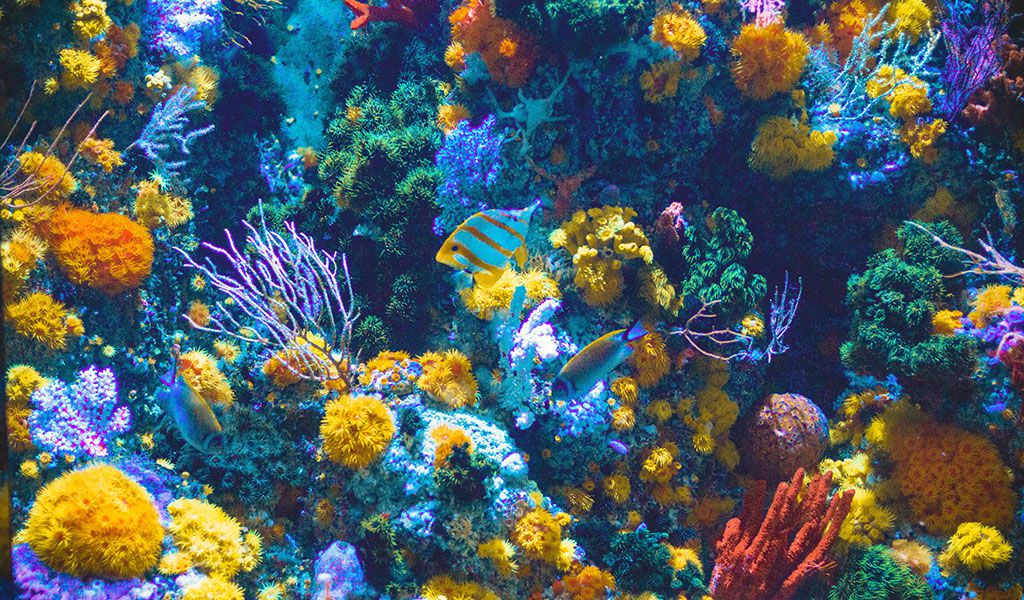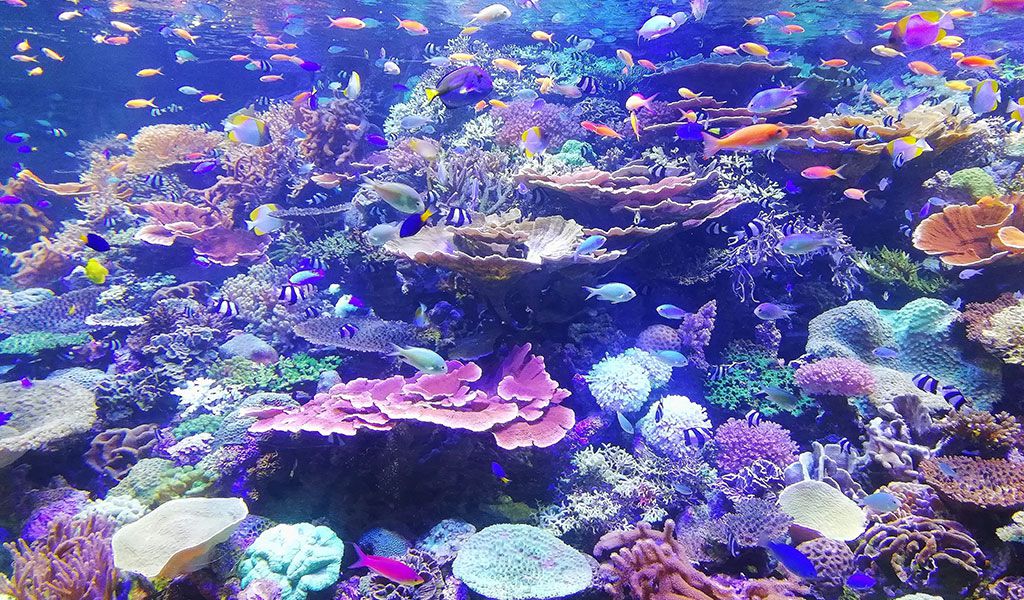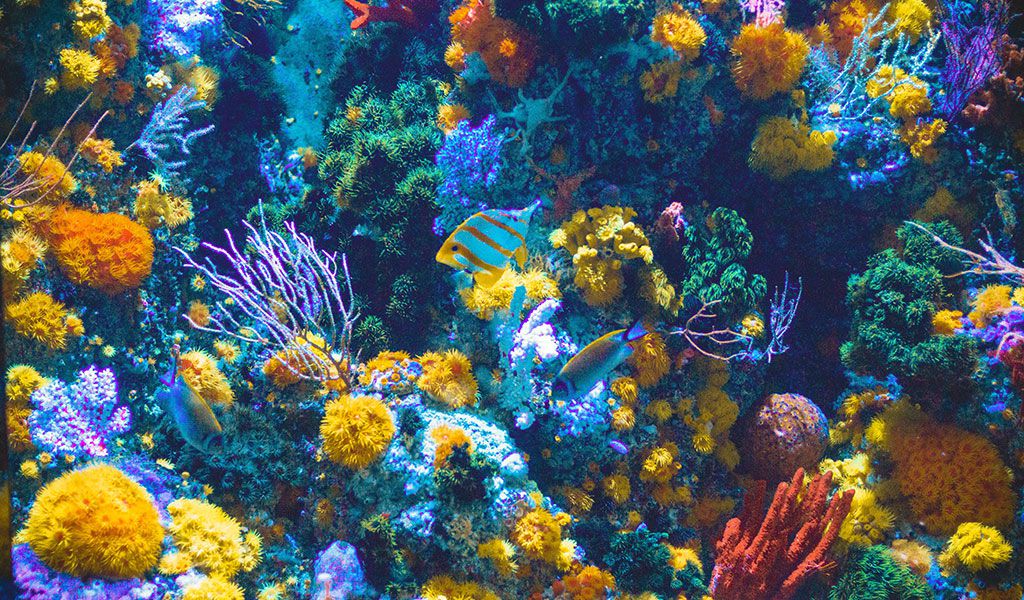The coral reef is a marine ecosystem, being composed of corals. Corals feature a central mouth surrounded by tentacles. Also, corals are animals rather than rocks or plants. Actually, corals do need food to provide sufficient energy. If you hold that corals do not need to eat, just read on, you will have more insight on this issue. In this article, we are going to talk about the coral reef food web. You will walk away with a much better understanding of the coral reef food chain. You will learn ways to feed your coral food.
What does coral eat
Corals are animals. However, they can not produce food by themselves. With the help of nematocysts (stinging cells in the tentacles of coral polyps), corals can capture prey. Plus, corals can collect their food in their mouths with tentacles.
So what do corals eat? Actually, plankton, zooplankton, bacterioplankton, debris, dissolved organic matter, small crustaceans, small fish, invertebrate larvae, and byproducts of photosynthesis are available options. Plus, you can feed pet corals commercial pellets, flakes, and freeze-dried foods. By the way, feeding some meaty food a few times each week, like mysis shrimp and brine shrimp, is beneficial to grow corals fast.
Besides that, shallow-water corals and Zooxanthellae (one kind of photosynthetic algae) are symbiotic species. While photosynthesizing, zooxanthellae extract water and carbon dioxide and provide corals with glucose, amino acids, and other byproducts giving energy to corals. Of course, corals can protect the Zooxanthellae with the help of hard covering.
Coral reef food web
The food web keeps a balance between different species. Commonly, each food web includes several trophic levels (the position in the food chain). For example, primary producers (produce food), primary consumers (consume producers), secondary consumers (consume primary consumers), and tertiary consumers (consume primary and secondary consumers). According to different food webs, there may be more consumer levels. The coral reef food web can be:
- Primary producers: Primary producers are the basis of a food web. They produce food. In the coral reef food web, the primary producers consist of phytoplankton, zooxanthellae, blown-green algae, brown algae, seaweed, etc.
- Primary consumers: Primary consumers include fish, corals, sea turtles, zooplankton, etc. They only consume food from producers or producers.
- Secondary consumers: Secondary consumers eat primary consumers. Anemones, starfish, stingrays, squid, jellyfish, sea slugs, sea snakes, and some corals are secondary consumers.
- Tertiary consumers: Tertiary consumers, like reef sharks, can consume primary and secondary consumers.
- Decomposers or detritivores: Decomposers will decompose dead organic matter. Also, detritivores consume dead organic matter.

How to feed corals
Corals can be kept in saltwater tanks. However, they are animals that need to consume food to survive. Corals can get nutrition by photosynthesizing through zooxanthellae. And it also enhances the corals’ color. Besides that, waste from fish, like damselfish, clownfish, and firefish, can meet your corals’ needs.
Then how to feed corals? In general, it is feasible to feed the corals two or three times each week. Never overfeed. Otherwise, it would lead to nitrate accumulation in your coral tanks, which is damaging to your coral. Plus, corals will be active before sunset. As a result, it is recommended to feed the coral food in the evening for them. It is the time that corals can absorb more nutrients.
As for corals with small polyps, like zoanthid corals, they should be fed small particles of food. While corals with large polyps are fond of large particles of food. For example, plate corals, open brains, and elegance. Just keep in mind – choose the food according to the type of corals. During the feeding process, you can turn off your water pump. It prevents your food from drifting away.
What can affect the growth of coral?
Commonly, the growth rate of corals may be affected by the following factors:
- Water temperature: Corals are sensitive to water fluctuation. Long-term high water temp would damage or even kill your corals.
- Water quality: Poor water quality is detrimental to corals. Because it may mean low oxygen levels or harmful algae thriving in your coral tanks.
- Water flow rate: Most corals need water flow to remove the excess food on their surface.
- Aquarium light: Adding an aquarium light can mimic the natural environment. Actually, it is beneficial to coral growth. Furthermore, the LED light helps to keep brilliant corals.
- Diet: Proper diet is necessary for corals. They are animals. Though they can get nutrients by photosynthesizing, additional feeding is also vital.

Among these factors, water conditions can be key to corals’ growth. Accordingly, it is necessary to monitor the water parameters and test salinity and specific gravity. In this case, the aquarium water test strips and aquarium hydrometer will help you a lot. The aquarium test strips can monitor seven crucial water parameters, including pH level, free chlorine, nitrite, nitrate, carbonate root, total alkalinity, and hardness. Moreover, an aquarium hydrometer will help you test salinity and specific gravity. Actually, it is easy to use and read the result. Just simply dunk it in the aquarium to fill it with water, then put it on a level surface to read the scale.
To sum up
In short, just keep in mind – corals consume food to grow up. Also, feeding a proper diet is helpful to form vibrant coral color, improve coral growth rate, and keep corals healthy and meaty. If you are interested in coral reef tanks, why not have a try? And there are some coral-safe angelfish, such as freckle tail angelfish, Black spot angelfish, and Zebra angelfish.
Related topics about corals
To learn more about corals in captivity, you can go to:
That’s all for today. Until now, have you got more about corals’ diet? For additional ideas about coral food, welcome to share with us in the comment. We are happy to receive your sharing. Finally, thanks for taking the time and we hope this article helps.
